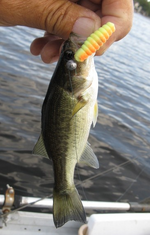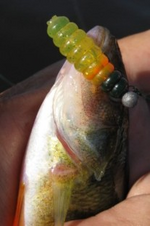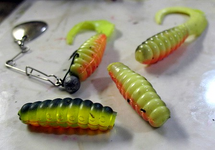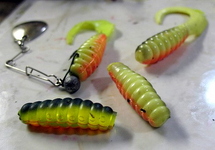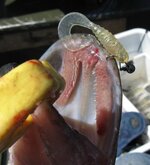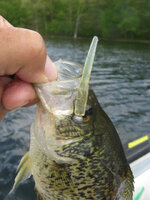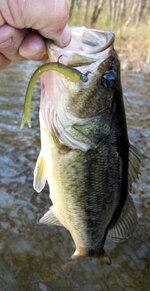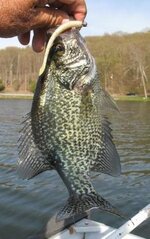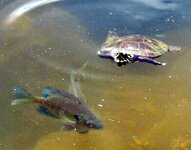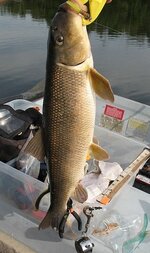SPOONMINNOW
Member
- Joined
- Oct 9, 2016
- Messages
- 261
The winter in N,Y, has been the warmest on record. The ice has never been thicker than 4" and mostly thin black ice. In Feb. the air temperature reached near 60 degrees on some days and any snowfall melted quickly. Rain amounts have been amazing which would have been a real snow problem if the air was below freezing. The pond I fished yesterday and today has panfish and bass. The water is near 47 degrees with fish swimming near the surface as if to take in the warm sun.
Seeing as how it's my private pond that I stocked years ago, I usually don't fish for them. But one thing I do in warmer weather is feed over 20 sunfish bits of bread that swim to me when they see me standing on the dock. This year, the sunfish came out to feed which has never happened in early March. I saw large stocked bass over 2' long swimming near the surface for no reason I can gather.
Cabin fever finally got to me and I cast a curl-tail grub on a 1/24 oz jig yesterday into the school of sunnies. Only one fish was caught along with a few nips at the tail. Today I cast a thin 1.5" straight-tail minnow shape on a 1/32 oz jig and caught two sunnies and a crappie plus about 6 nips & misses. It seems the slower speed and smaller lure shape made the difference since the lighter jig allowed a slower stop & go retrieve using only the reel handle for lure action. There were more hits and misses today than yesterday maybe because the water still needs to get into the 50's for any increase in fish aggression.
More rain coming in the next three days which doesn't mean much as regards fish activity levels. I will go smaller and light to see if it makes a difference. Here's one of the sunnies caught and the clear plastic lure (from a mold) used:
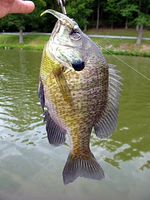
Seeing as how it's my private pond that I stocked years ago, I usually don't fish for them. But one thing I do in warmer weather is feed over 20 sunfish bits of bread that swim to me when they see me standing on the dock. This year, the sunfish came out to feed which has never happened in early March. I saw large stocked bass over 2' long swimming near the surface for no reason I can gather.
Cabin fever finally got to me and I cast a curl-tail grub on a 1/24 oz jig yesterday into the school of sunnies. Only one fish was caught along with a few nips at the tail. Today I cast a thin 1.5" straight-tail minnow shape on a 1/32 oz jig and caught two sunnies and a crappie plus about 6 nips & misses. It seems the slower speed and smaller lure shape made the difference since the lighter jig allowed a slower stop & go retrieve using only the reel handle for lure action. There were more hits and misses today than yesterday maybe because the water still needs to get into the 50's for any increase in fish aggression.
More rain coming in the next three days which doesn't mean much as regards fish activity levels. I will go smaller and light to see if it makes a difference. Here's one of the sunnies caught and the clear plastic lure (from a mold) used:

Last edited:

